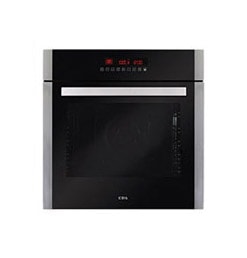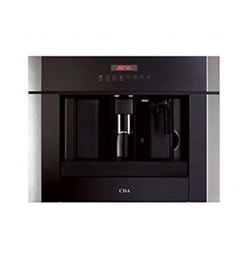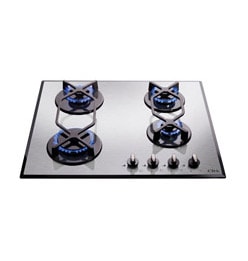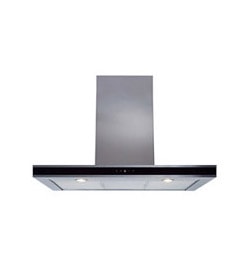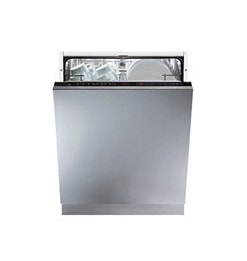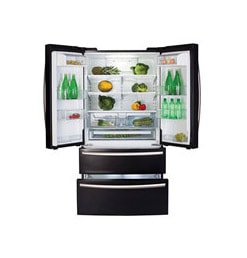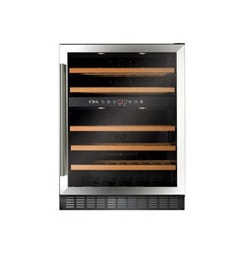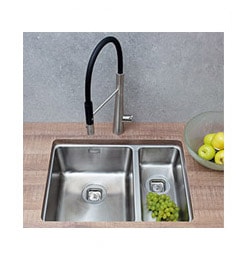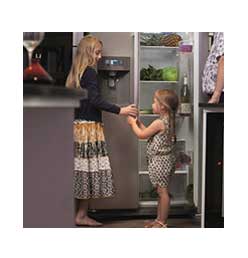
FAQ – Refrigeration
Why is there water pooling in the base of my fridge?
Firstly, check to see if the drain hole at the back of the fridge is blocked. Our models are ‘wet wall’ refrigeration and work by allowing the water accumulated during the cooling process to run down the back wall of the refrigeration, into the drain hole at the back of the appliance. If this is blocked, the water will have nowhere to go. If you find that it is blocked, clear it using the device supplied with the appliance or with a drinking straw.
Alternatively, make sure that your appliance is level. If it is tipping forward for any reason the water will not be able to drain easily out through the back of the appliance. If this is the case, level the appliance as necessary.
The alarm on my fridge keeps going off.
Many of our refrigeration models feature an alarm to let you know that you have left the fridge door open too long. This is normal.
There are ice droplets on the back wall of the fridge.
This is a normal part of the ‘wet wall’ refrigeration style. The ice forms on the back of the fridge interior and then runs down the back wall and out through the drain hole.
How do I remove a seal on my fridge?
You should not need to remove a door seal on your fridge or freezer. They are built into the moulding of the door and so only the exposed surfaces should need cleaning by wiping them down with a solution of mild detergent and water. They are not easily removed. There is more cleaning advice on our refrigeration tips page to help maintain healthy seals
How do I use a CDA fridge freezer?
Depending on the model number and appliance type, the controls for your fridge or freezer can be set using the rotary temperature dial or electronic displays. Click here to search for your model number and please refer to your appliance’s specific instruction manual.
The appliance is not cooling.
Please check that the appliance has been installed in accordance with the instructions provided in the manual. There are diagrams available in the manual that outline the required ventilation for each type of fridge or freezer. Without appropriate ventilation, the appliance’s performance will be impeded and it will not cool effectively.
My appliance has a build-up of ice on the back wall.
Please check that the appliance has been installed in accordance with the instructions provided in the manual. There are diagrams available in the manual that outline the required ventilation for each type of fridge or freezer. Without appropriate ventilation, the appliance’s performance will be impeded.
Also, check the appliance door is sealing correctly. If the appliance is fitted too far back in the housing, the appliance door will not close correctly with a décor door fitted. This will allow warm air into the appliance, causing it to work harder to bring the internal temperature down, resulting in an ice build-up.
Has the door been left open for an extended period of time? If so, the appliance will continue to try and cool the internal cavity, despite warm air entering. This will result in an ice build-up from over working.
There is condensation on the shelves and an ice build-up on the back wall.
Check the appliance door is sealing correctly. If the appliance is fitted too far back in the housing, the appliance door will not close correctly with a décor door fitted. This will allow warm air into the appliance, causing it to work harder to bring the internal temperature down, resulting in an ice build-up.
My freezer has a build-up of ice inside.
As part of the routine maintenance of your freezer, if it is not a frost-free model, you should perform a full defrost on the appliance to get rid of any ice build-up. To do this, you should use up any food in there that you do not want to spoil by defrosting and completely empty the appliance. Once empty you can switch it off and leave the door ajar, allowing the ice to naturally melt and clear the appliance interior. Place a towel on the floor in front of the freezer to soak up any water. Do not scrape the inside of your appliance with anything as you can damage the insulation layer and irreparably break the freezer.
You can speed up the defrosting process by placing a tray of warm water inside the freezer to gently and effectively encourage a faster defrosting action.
My freezer has a build-up of ice inside but is a ‘frost-free’ model.
Check the appliance door is sealing correctly. If the appliance is fitted too far back in the housing, the appliance door will not close correctly with a décor door fitted. This will allow warm air into the appliance, causing it to work harder to bring the internal temperature down, resulting in an ice build-up.
My appliance is tripping the electrics.
Firstly, check the power supply to the appliance is large enough for the appliance’s requirements. You can read the required power supply figure on the rating plate. If this is OK then you may want to ask a qualified/competent person to double check that there are no problems with the socket.

